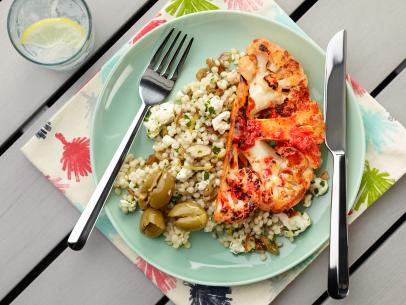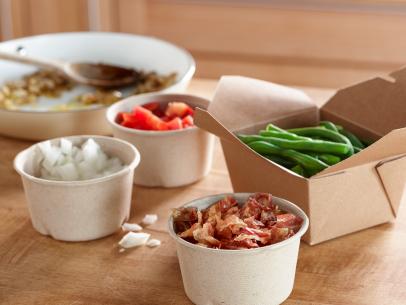
Quesabirrias
- Level: Easy
- Total: 3 hr 40 min
- Active: 40 min
- Yield: 16 to 20 quesabirrias
-
- Nutritional Analysis
- Per Serving
- Serving Size
- 1 of 18 servings
- Calories
- 394
- Total Fat
- 18 g
- Saturated Fat
- 7 g
- Carbohydrates
- 19 g
- Dietary Fiber
- 4 g
- Sugar
- 1 g
- Protein
- 42 g
- Cholesterol
- 117 mg
- Sodium
- 714 mg
- Level: Easy
- Total: 3 hr 40 min
- Active: 40 min
- Yield: 16 to 20 quesabirrias
-
- Nutritional Analysis
- Per Serving
- Serving Size
- 1 of 18 servings
- Calories
- 394
- Total Fat
- 18 g
- Saturated Fat
- 7 g
- Carbohydrates
- 19 g
- Dietary Fiber
- 4 g
- Sugar
- 1 g
- Protein
- 42 g
- Cholesterol
- 117 mg
- Sodium
- 714 mg
Ingredients
Birria:
For Serving:
Directions
- For the birria: Heat the oil in a large skillet over medium-low heat. Working in batches, add the guajillo, ancho and pasilla chiles in an even layer. Cook until they are aromatic and change color slightly, 8 to 12 seconds. Be careful not to burn the chiles as this will make them bitter. Drain the chiles and set aside.
- Place the allspice, sesame seeds, cumin seeds and cinnamon stick on a dry comal (flat Mexican griddle) or in a skillet over medium heat. Toast the spices until they are aromatic, about 30 seconds to 1 minute. Remove from the skillet and set aside.
- Turn the heat to high under the comal or skillet and add the onion, tomatoes and garlic in an even layer. Cook on all sides until blistered spots start to appear, 1 to 2 minutes on each side. Set aside.
- Combine the toasted chiles, toasted spices, charred vegetables, oregano, 2 tablespoons salt, 1 teaspoon black pepper, 2 cups of beef broth and the apple cider vinegar in a high-powered blender (work in batches if necessary). Blend until you have a smooth paste, 3 to 4 minutes. Place the beef in a large Dutch oven or a large pot. Pour in the chile mixture; at this point you can refrigerate the beef so it can marinate in the sauce for an hour or up to overnight, but it’s not necessary.
- When ready to cook, pour in enough of the remaining 2 to 4 cups beef broth to cover the meat. Add the thyme sprigs and bay leaves and season to taste with more salt and pepper if desired. Bring to a boil. Lower the heat to medium-low and cover the pot. Simmer, stirring occasionally, until the meat is tender and shreds easily, 2 1/2 to 3 hours, adding more broth if necessary. Discard the bay leaves and thyme sprigs.
- For serving: Remove the meat and shred it. Add some cooking liquid to moisten the meat. Heat a comal or medium nonstick pan over medium heat. Skim some of the fat from the liquid the beef cooked in and place it in a shallow bowl. Working one at a time, lightly dip a tortilla in the fat, being careful not to break the tortilla and making sure both sides are covered. Place on the comal or in the skillet and cook for 10 to 15 seconds per side.
- Fill the tortilla with the shredded birria and a generous sprinkle of cheese. Fold in half to make a half-moon and cook until slightly crispy on the surface and the cheese is melted, 30 seconds to 1 minute. Repeat with the remaining tortillas. Serve the quesabirrias with a sprinkle of onions and cilantro, lime wedges and a side of the cooking liquid to dip the tacos into.
Cook’s Note
Dry chiles are the base of this dish so make sure they’re fresh and in good shape. They should be slightly flexible, have some shine and should smell earthy and a little sweet or spicy. To remove the seeds from dry chiles use scissors to cut off the stems and then cut them lengthwise. Use your fingers or a dry paper towel to scrape out the seeds and veins. Don’t rinse them; it’s important to keep them dry since they will be fried in oil.
































